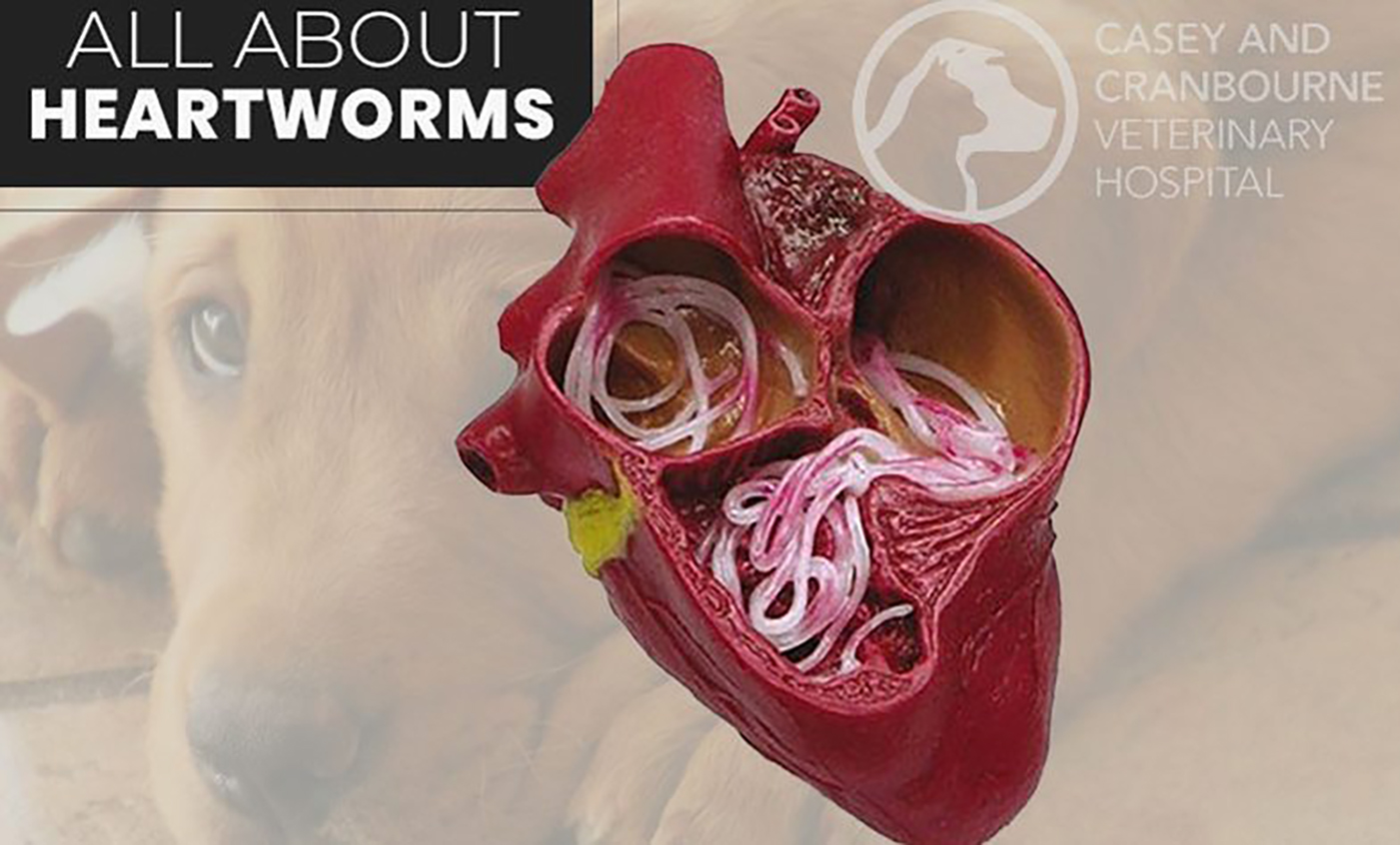This two-part series explores the Thyroid gland and the associated problems we see in dogs and cats.
This week, we take a look at dogs and what diseases of the thyroid gland affect them.
Thyroid disease is a relatively common problem in dogs. While it is usually treatable, learning that your dog has a thyroid condition is understandably concerning.
Here is some information about the more common thyroid diseases that can affect dogs to help you better understand your dog’s condition.
What Does the Thyroid Do?
In order to understand thyroid disease, it helps to have an understanding of what the thyroid actually does.
The thyroid gland is located in your dog’s neck, where it produces the hormone thyroxine (T4), along with several other important thyroid hormones. These hormones play a large role in your dog’s metabolism and can cause major problems when they are not produced at normal levels. The thyroid is like the thermostat of the body.
Hypothyroidism
Hypothyroidism occurs when your dog is not secreting enough of the thyroid hormones, causing your dog’s metabolism to slow. This condition is more common in dogs than in other domestic animals, but it usually responds well to appropriate medication.
What Causes Hypothyroidism?
In 95 percent of cases, the direct destruction of the thyroid gland causes hypothyroidism. This destruction is usually the result of either lymphocytic thyroiditis or idiopathic atrophy of the thyroid gland. Other, rarer causes of hypothyroidism include cancer and congenital defects.
What Are the Symptoms of Hypothyroidism in Dogs?
Low thyroid levels affect all your dog’s organ systems. The symptoms of hypothyroidism can vary greatly from dog to dog, but are all mostly related to your dog’s slowing metabolism.
Here are some of the more common symptoms:
- Lethargy
- Exercise intolerance
- Mental dullness
- Weight gain without a change in appetite
- Obesity
- Cold intolerance
- Changes in coat and skin, like increased shedding, hair thinning, and hair loss
- Thickening of the skin
- Reproductive disturbances in intact dogs
- Rarely, untreated/undiagnosed hypothyroidism can lead to a mega-oesophagus which results in regurgitation of food/water or a change in voice and/or harsh raspy breathing due to laryngeal paralysis
Some breeds do appear to be at greater risk of developing hypothyroidism than others. Medium to-large sized breeds are more likely to develop the disease than toy and miniature breeds, and the Cocker Spaniel, Miniature Schnauzer, Dachshund, Doberman Pinscher, Golden Retriever, Airedale Terrier and Irish Setter appear to be predisposed to developing the condition.

Diagnosing Hypothyroidism in Dogs
The Merck Veterinary Manual states that hypothyroidism is one of the most over-diagnosed diseases in dogs. This is because many diseases mimic hypothyroidism. Some conditions or clinical signs even improve with thyroid medication. Other diseases also affect the thyroid levels, but are not hypothyroidism. This can make diagnosing a thyroid condition challenging.
If your dog is exhibiting some of the clinical signs of hypothyroidism, blood tests are required to investigate further. Typically, a dog with hypothyroidism will have a high cholesterol level and low total T4 concentration. This is a good initial screening test however, T4 level can also be low due to non thyroidal illnesses and further tests such as TSH and free T4 might be required to get a definitive result.
Treating Hypothyroidism in Dogs
Hypothyroidism is treatable and manageable with long term medication in the form of thyroxine tablets, a replacement hormone compound, to offset your dog’s low thyroid function.
The dosage will vary depending on your dog’s weight and thyroid levels. The dose may need to be adjusted over time but you should expect to see results after one to two months. Once a stable dose has been determined, your dog will most likely need to have his thyroid levels retested once or twice a year and continue the stable dose of medication, for the rest of his life.
Autoimmune Thyroiditis
Some breeds of dogs are predisposed to a type of thyroid disease called autoimmune thyroiditis. This disease occurs when the immune system attacks the thyroid gland and is more common in the Akita, Doberman Pinscher, Beagle, and Golden Retriever.
Hypothyroidism can be the only manifestation of this disease, but autoimmune thyroiditis can also be a symptom of another disorder, such as systemic lupus erythematosus, or panendocrinopathy. This is one of the reasons why getting an accurate diagnosis for hypothyroidism is so important.
Hyperthyroidism
Hyperthyroidism occurs when your dog’s body produces too much of the thyroid hormone, increasing your dog’s metabolic rate to dangerous levels. This disease is extremely rare in dogs and is much more common in cats, but when it does affect dogs, it is usually serious.
A type of cancer, called thyroid carcinoma, is the primary cause of hyperthyroidism in dogs. Once diagnosed, treatment options and prognosis will be discussed. These options will depend on the stage of the cancer, the size of the tumour, and the extent of nearby tissue involvement.
There are several treatment options available for thyroid carcinoma including surgery, chemotherapy, or radiation treatment.
The symptoms of hyperthyroidism in dogs include:
- Weight loss
- Hyper-excitability
- Increased appetite
- Increased thirst
- Increased urination
- Enlargement of thyroid gland
- Vomiting
- Diarrhoea
- Increased amount of stool
- Congestive heart failure
- Tachycardia (fast heart rate)
- Heart murmurs
- Cardiomegaly (enlarged heart)
- Dyspnea (shortness of breath)
Unfortunately, the long-term prognosis for dogs with hyperthyroidism due to thyroid carcinoma is poor to grave.
Goitres in Dogs
Not all thyroid enlargement is necessarily cancerous. In some cases, this enlargement, called a goitre, could be due to another cause entirely.
Goitres can affect all domestic mammals and birds. They can be caused by iodine deficiencies, eating goitrogenic substances (foods or other substances that affect thyroid function), too much iodine in the diet, and inherited defects that affect the synthesis of thyroid hormones.
Luckily, dietary imbalances are rare in dogs fed a commercial diet. Most goitres in dogs are caused by genetic defects, or they develop as a side effect of administration of trimethoprim-sulfa which is an antibiotic used to treat a variety of infections in dogs but is rarely used in modern veterinary medicine due to better, safer drugs on the market today.
Goitres can be a symptom of congenital hypothyroidism, and Toy Fox Terriers in particular, appear to be predisposed to congenital hypothyroidism with goitres.
Goitres often appear more alarming than they are. However, any swelling on your dog’s neck should be taken seriously. If you suspect your dog has a goitre, or if you find swelling in your dog’s neck, contact the clinic as soon as possible.
What should I do if I think my dog has a thyroid problem?
Regardless of the type of thyroid disease diagnosed in dogs, medical or surgical treatment will always be required. Please contact the clinic and make an appointment with one of our experienced vets if your dog is showing symptoms of thyroid disease or has developed a swelling in the neck.



